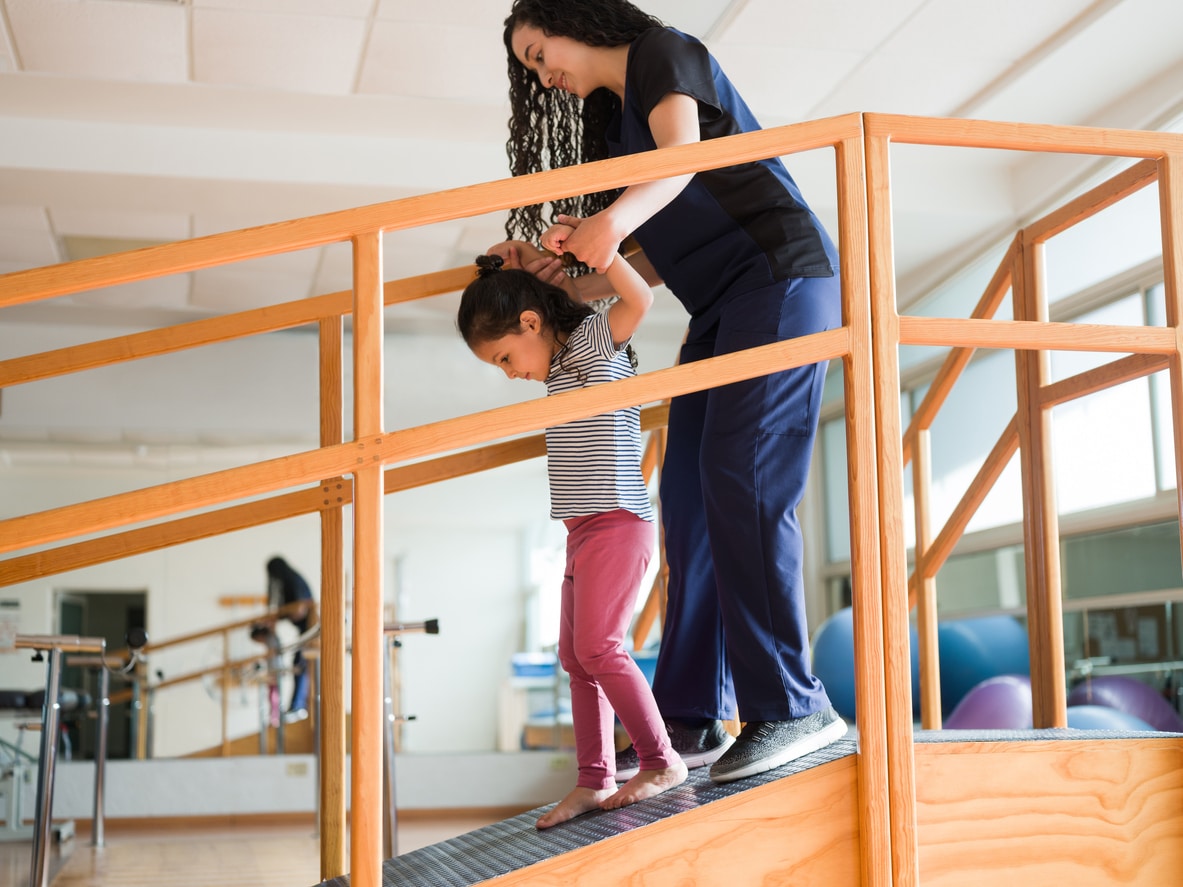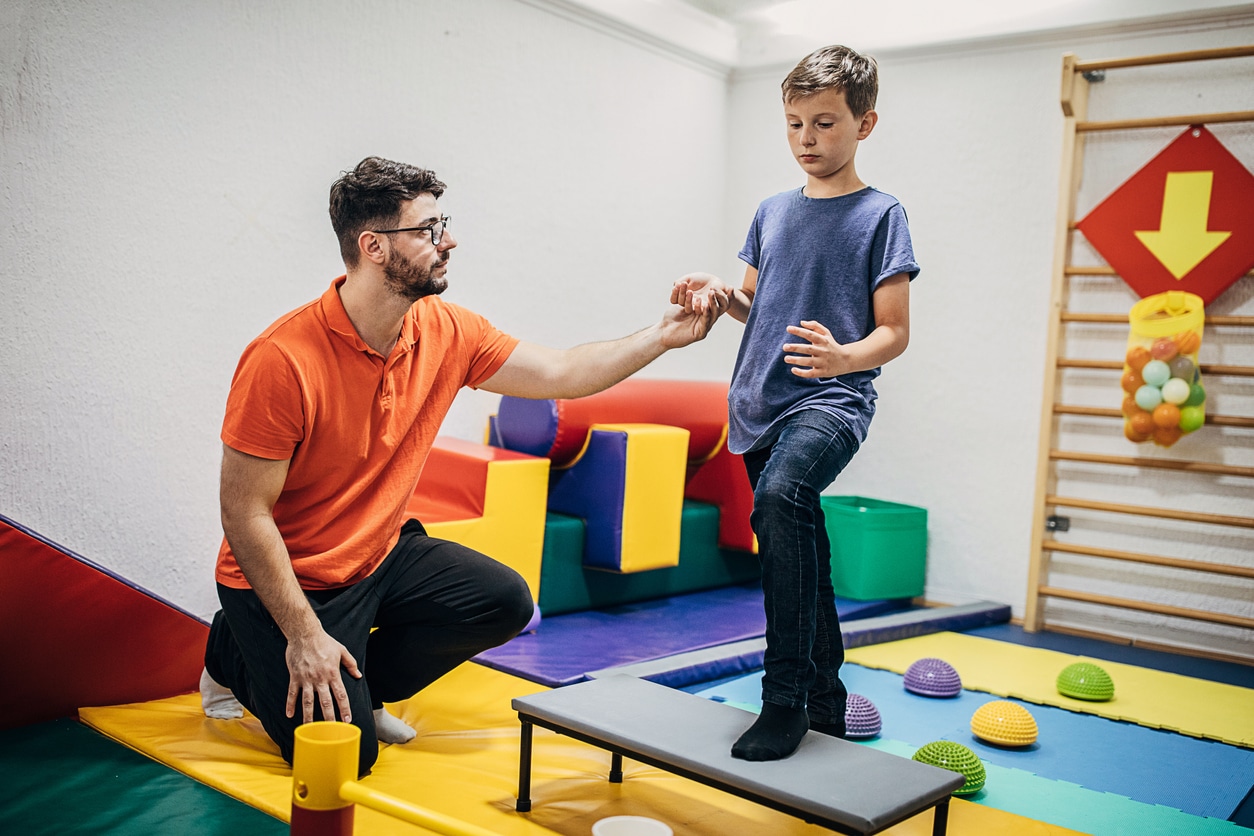Gait Abnormalities
At Circle of Care, we offer pediatric physical therapy for children facing gait abnormalities. Through a combination of exercises, stretches, and specialized techniques, our physical therapists will guide your child through the treatment process for abnormal gait. Take the first step by scheduling a consultation with our gait experts.
Get Treatment Now

What is Gait Abnormality in Children?
Children’s gait abnormalities refer to changes or deviations from the typical walking pattern seen in children. While every child’s gait is unique, certain conditions or injuries can affect their walking pattern, leading to abnormal gait. These abnormalities can manifest in several ways, such as limping, dragging of toes, or taking shorter steps.
What are the Symptoms of Gait Abnormalities?
Gait abnormalities in children can manifest in a variety of ways. While the specific symptoms may vary depending on the type and cause of the abnormal gait, there are some common signs to watch out for:
- A noticeable limp
- Toe dragging
- Shuffling of feet
- Short steps
- Difficulty supporting body weight
- Coordination issues
It’s important to consult a healthcare professional if you notice any of these symptoms in your child. They can provide a comprehensive evaluation and diagnosis to determine the underlying cause of the gait abnormality.
What are the Most Common Types of Gait Abnormalities in Children?
There are several different types of gait abnormalities, the most common include:
- Antalgic Gait: An antalgic gait is the most prevalent type of gait abnormality in children. It typically happens as a result of pain, causing the child to avoid adding pressure on the affected leg or foot. This leads to a noticeable limp in their walking pattern.
- Scissors Gait: Scissors gait is characterized by a walking pattern where the knees and thighs hit or cross in a scissors-like manner. This type of gait often affects children diagnosed with spastic cerebral palsy and may result in slow and small steps.
- Spastic Gait (Hemiplegic Gait): Children with spastic gait walk with one stiff leg, which may either drag or swing around in a semicircular motion known as circumduction. Conditions such as cerebral palsy, multiple sclerosis, or hemiplegia commonly lead to this type of gait abnormality.
- Steppage Gait (Neuropathic Gait): Steppage gait causes the child to elevate their hip to lift their leg higher than usual. This high step is accompanied by a floppy foot that drops, while the toes point down and scrape the ground during walking.
- Waddling Gait: A waddling gait gives children a distinctive waddling or duck-like walk, characterized by exaggerated movements of the upper body.
What are the Causes of Abnormal Gait in Children?
When we talk about unusual walking patterns in children, it’s important to understand that these differences can have several causes. These sources can include different conditions or specific situations, each with its traits and effects. Understanding the causes of an abnormal gait is crucial for helping children with unusual walking patterns and gait abnormalities in an effective way. Here are the most common causes of walking abnormalities:
- Musculoskeletal conditions
- Neurological disorders
- Traumatic injuries
- Developmental delays
- Genetic conditions
It’s important to consult with a healthcare professional to determine the specific cause of the gait abnormality in your child. A thorough evaluation, including medical history, physical examination, and possibly additional tests, can help identify the underlying cause.
How Are Gait Abnormalities Diagnosed?
The diagnosis of gait abnormalities in children involves several key steps. It starts with a review of the child’s medical history to gather information about injuries, developmental milestones, and underlying medical conditions related to the gait issue. Next, a thorough physical examination assesses posture, muscle strength, coordination, and walking patterns; this can also include X-rays or MRI scans to check bone or joint issues.
Based on the diagnostic findings, the healthcare professional or physical therapist will be able to determine the specific type and cause of the gait abnormality in the child. This information is essential for developing an appropriate treatment plan.

How Are Gait Abnormalities Treated in Children?
The treatment of gait abnormalities in children depends on the underlying cause and the specific type of gait abnormality. The goal of treatment is to improve the child’s walking pattern, enhance their mobility, and address any associated symptoms or complications. Treatment options may include:
Physical Therapy for Gait Abnormalities
Physical therapy plays a crucial role in treating gait abnormalities in children. A physical therapist will design a customized treatment plan to improve muscle strength, flexibility, balance, and coordination. They may use exercises, stretches, and specialized techniques to address the specific gait abnormality.
Assistive Devices
Depending on the severity of the gait abnormality, assistive devices such as canes, walkers, or crutches may be prescribed to aid the child in maintaining balance and mobility.
Surgical Intervention
In rare cases where structural abnormalities or severe deformities are present, surgical intervention may be considered to correct the underlying issues and improve gait.
The exact treatment approach will be determined by the healthcare professional based on the child’s specific needs and the underlying cause of the gait abnormality. Regular follow-up appointments and ongoing therapy may be necessary to monitor progress and ensure optimal outcomes.
The Benefits of Physical Therapy for Gait Abnormalities in Children
Physical therapy is a vital component of the treatment plan for children with gait abnormalities. A skilled physical therapist can play a key role in improving walking patterns, enhancing mobility, and addressing any associated symptoms or limitations. Here are some ways in which physical therapy can help:
- Develop muscle strengthening when walking
- Improve joint flexibility and range of motion
- Improve balance and coordination
- Develop a more functional and efficient walking pattern
- Providing assistive device training if needed
- Educate parents and children on strategies to reinforce progress at home
Physical Therapy for Gait Abnormalities with Circle of Care
Gait abnormalities in children can have several causes and show symptoms in different ways. Identifying and addressing these abnormalities early on is crucial for ensuring optimal physical development and preventing further complications. With proper diagnosis and comprehensive treatment, including physical therapy, children can achieve improved walking patterns. Our compassionate team of skilled therapists will work closely with your child to develop a personalized treatment plan that focuses on their overall well-being. Contact us today to learn more about our physical therapy services for gait abnormalities in children.
